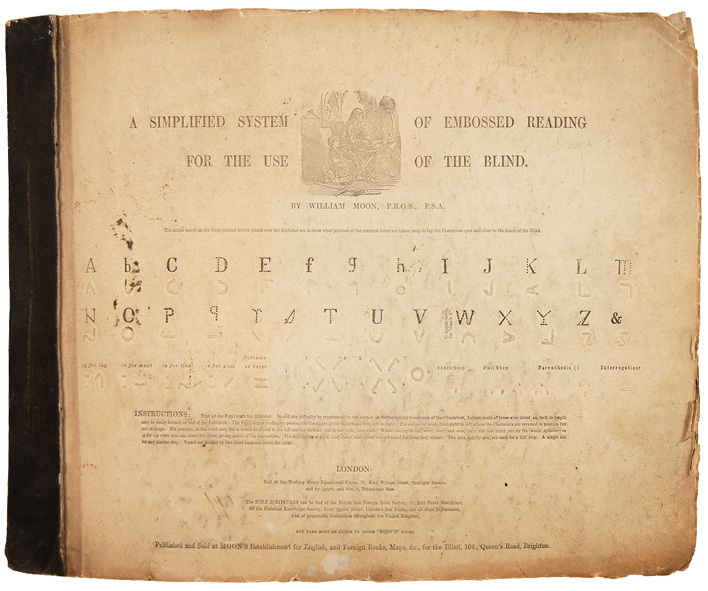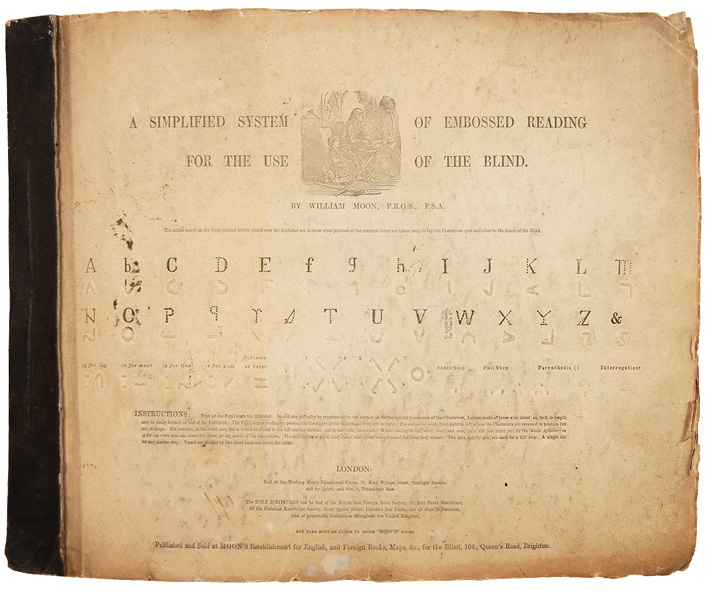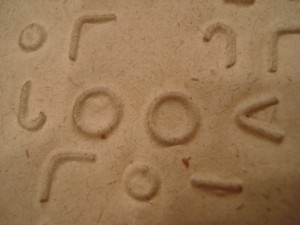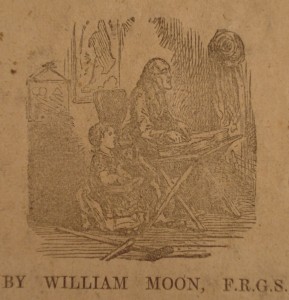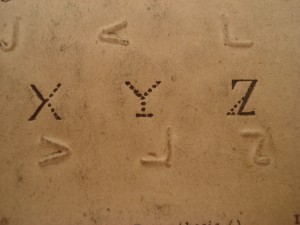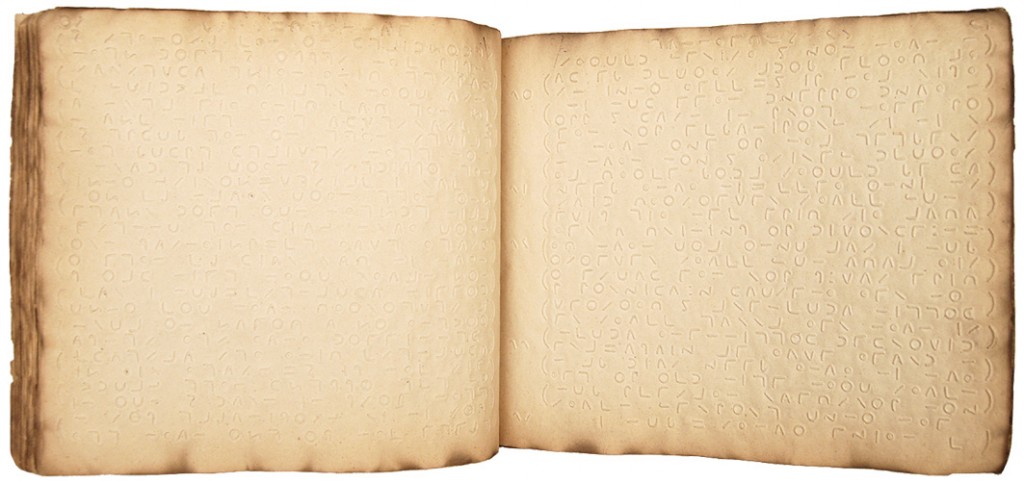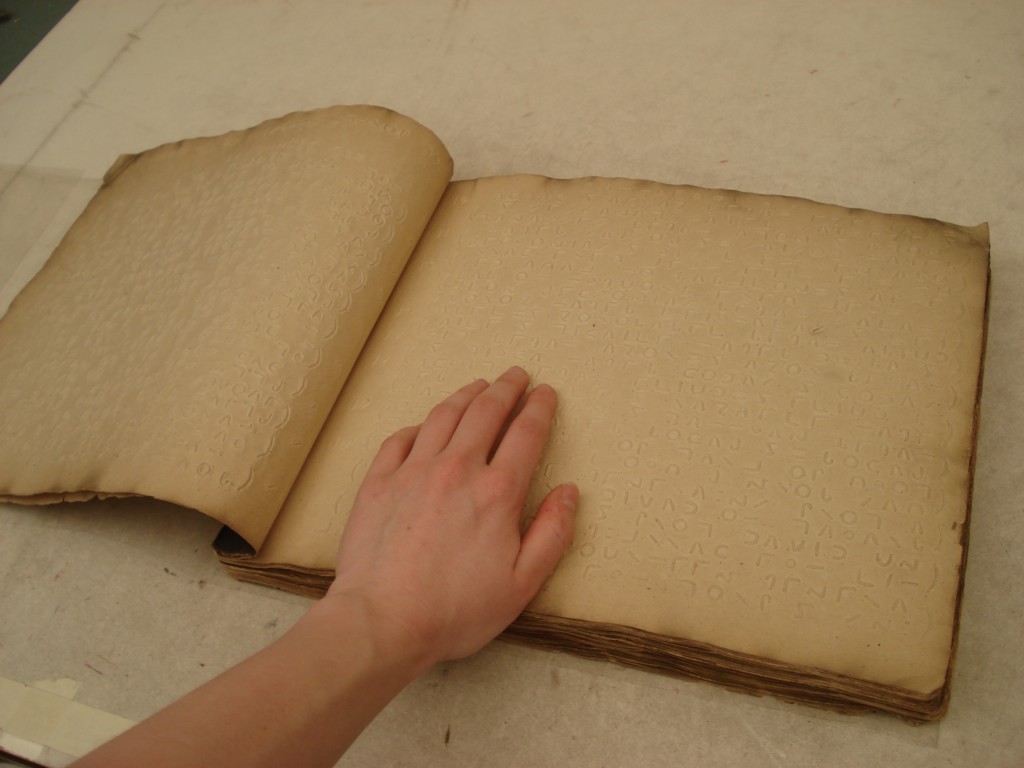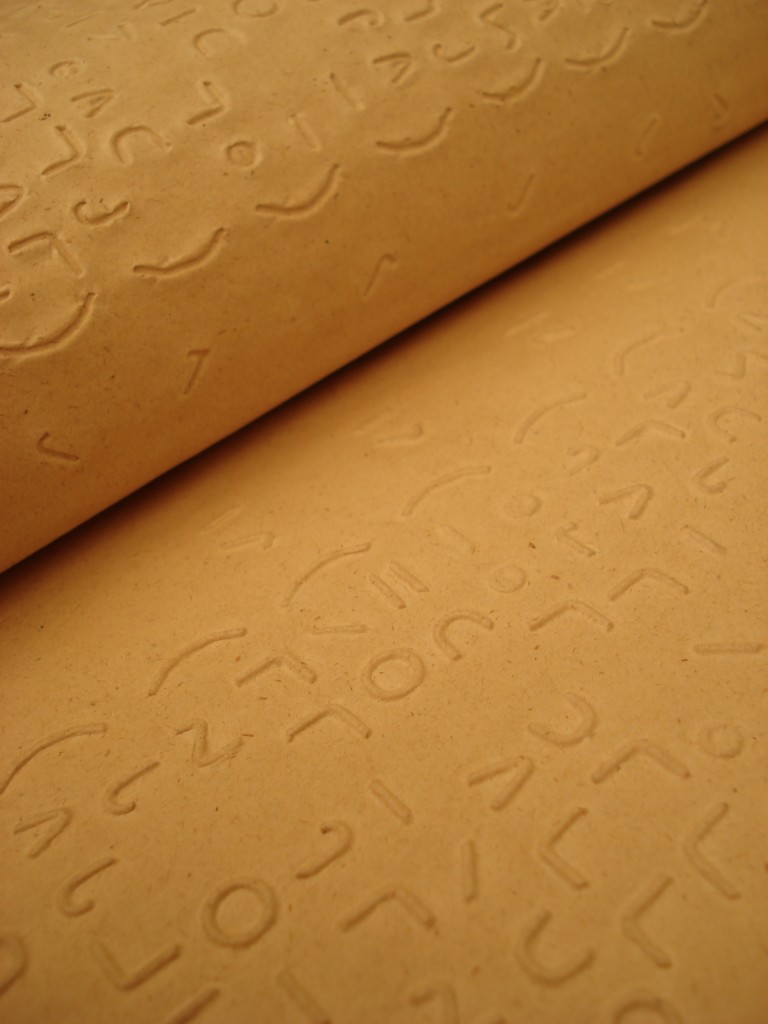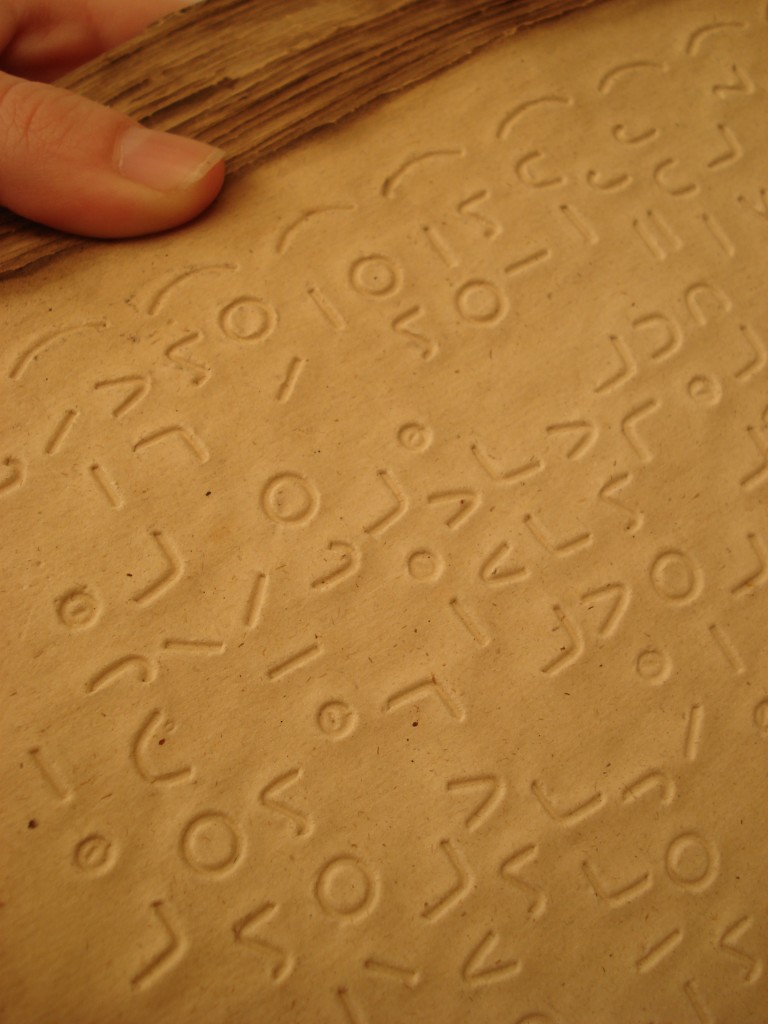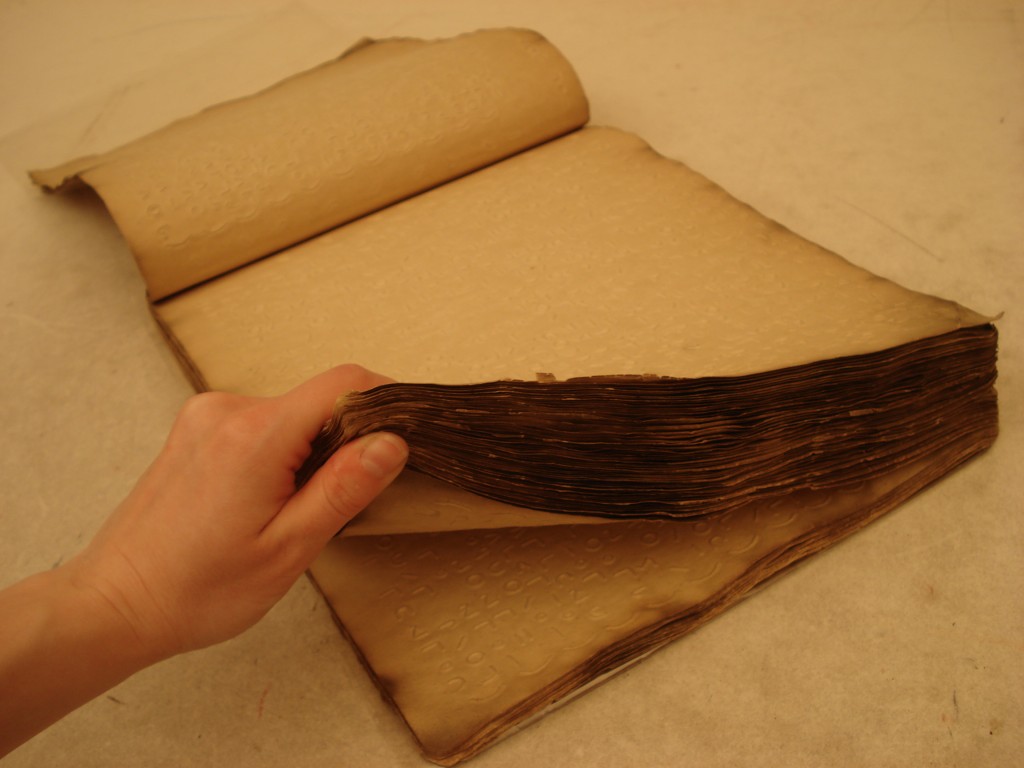As bibliophiles, how often do we stop to consider the ways sightless people experience books and reading? Prior to the mid-nineteenth century few options existed for the blind; several systems of raised lettering had been developed, but they were complicated and difficult to learn. Meanwhile, the growth of literacy and the media during the industrial revolution led to an increased demand for texts of all types, including those accessible to the blind.
William Moon, born in 1818, contracted smallpox as a young child and by age 22 had lost his sight completely, which ended his dream of entering Holy Orders. Frustrated by the quality of the embossed reading systems he tried, and eager to improve worldwide literacy and access to the Bible, he set about developing his own system based on roman lettering. Moon’s system was easy to master, particularly for those who had learned to read before they lost their sight, and it became very successful. Below is an example of the word ‘book’ in Moon script demonstrating how close the letters are to the roman forms.
Demand for these materials was high, and Moon began printing a monthly magazine and other booklets. He also traveled extensively, setting up presses and teaching others to use his system. His great ambition, however, was to print the entire Bible. Hindered by a lack of type, he experimented with stereotyping. Financial assistance was provided by the philanthropist Sir Charles Lowther, who had also been blinded in childhood and whose mother had imported some of the first embossed books into England. Moon soon learned to produce stereotyped plates at a sixth of the normal price and in 1848 began printing chapters of the Bible–it would total 60 volumes in all, each one loosely bound with a guide on the cover.
Engraving of a man and child reading Moon script.
X, Y, and Z, from the tutorial.
Below, the back of the embossed pages:
The attributes that made Moon’s books successful also made them impractical, as they utilized large letters that could only be printed on heavy paper on single-sided pages. This copy of part I of the Gospel of Matthew measures 378 × 273 mm and is 40 mm thick, far larger than the same amount of printed text. The size of the books made them impractical to store and the loose binding meant that copies deteriorated quickly. This intact volume, stereotyped by Moon himself in 1848 with a cover dated to 1859, is a rare specimen.
The introduction of Braille in 1870 marked the beginning of the end for Moon’s script, but recent technology has solved the problem of its unwieldiness and lead to renewed interest in the system, particularly for individuals who have lost their sight after learning to read and those who have difficulty reading Braille. You can read more about the Moon system at the website of the Royal National Institute for the Blind and this William Moon website.

